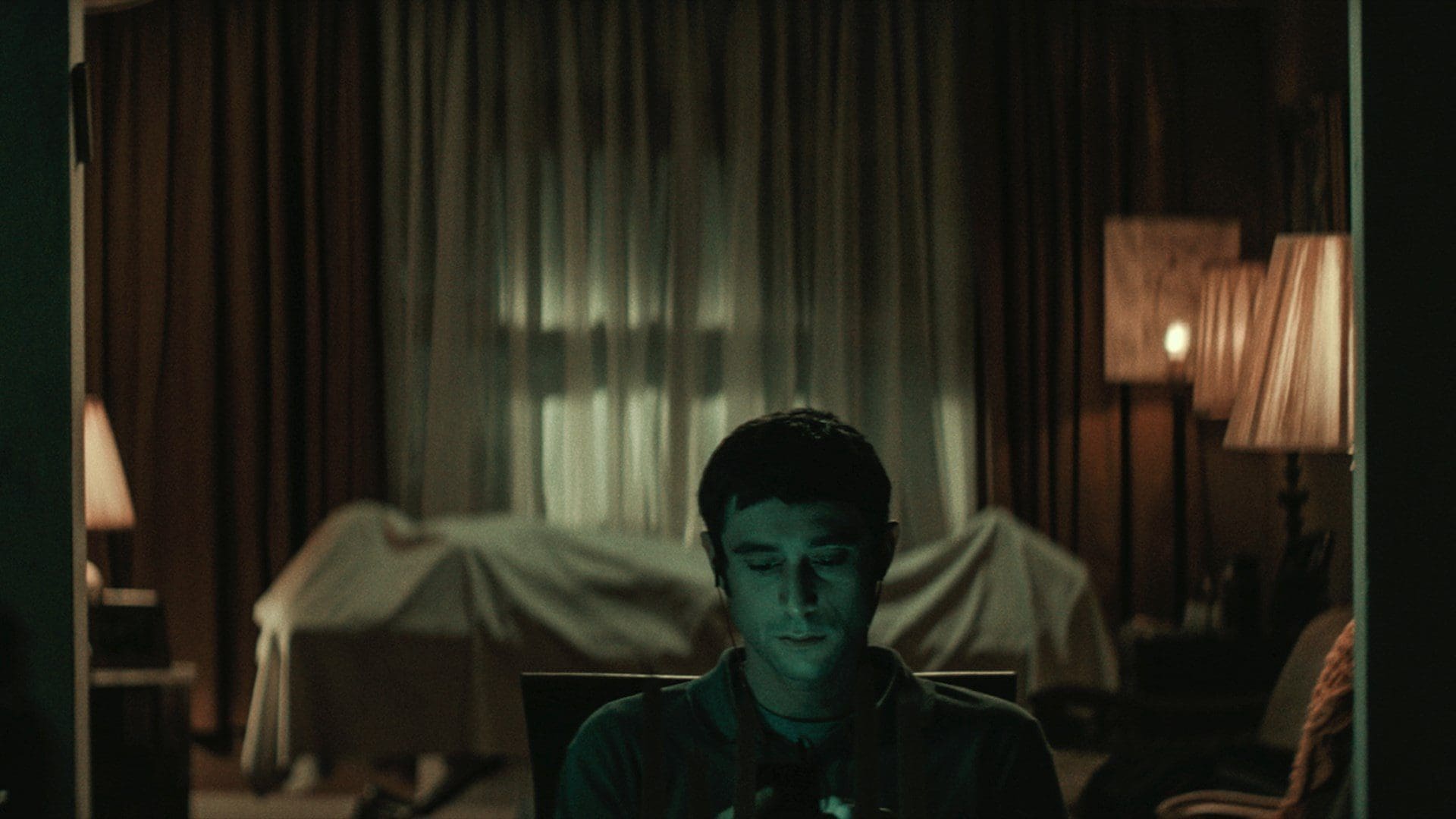
In its purest form, writer-director Keith Thomas’s new film, The Vigil, is an old-fashioned haunted house movie. In his former life–before he left his Orthodox Jewish faith–Yakov (Dave Davis) was a shomer, a person paid to keep watch over a dead body and protect it from evil before burial. Desperate for money to pay his rent, Yakov returns to the job for a night to watch over the body of Ruben Litvak, a Holocaust survivor who spent the last years of his life as a shut-in with his wife (Lynn Cohen). Though Mrs. Litvak warns Yakov to leave, he stays and soon realizes that a malevolent spirit called a mazzik has been terrorizing the Litvaks for years. And unless Yakov can overcome his guilt over his little brother’s death, he’ll become its next victim.
Though the Orthodox Jewish milieu sets the story in a very different world than the Christian trappings usually characteristic of haunting/possession horror movies, Thomas still uses a lot of classic horror techniques to cultivate the film’s mood and they’re largely responsible for why the film succeeds. Perhaps most obvious–and most effective–is its visual style. Thomas and cinematographer Zach Kuperstein keep the images very dark and fill the movie with wide shots where Yakov has his back to turned to the open but obscured spaces behind him. The result is that the audience is constantly worried some horrible thing will pop into frame to scare them or the characters and the way Thomas maintains that suspense throughout is the film’s biggest asset.
That said, some of The Vigil‘s scariest moments are also its more outlandish. After failing to get in touch with his therapist multiple times throughout the night, Yakov suddenly receives a call back. At this point, after so many hallucinations and watching the mazzik play mind games with Yakov, it’s not a leap to suspect that the voice on the phone may be yet another trick—especially as the call goes on. However, the scene becomes even more chilling (and thrilling) when the real therapist calls in the middle of Yakov’s call with the mazzik. It’s a really creepy momnet, but not every big swing connects quite as well.
Arguably the film’s weakest scene is the one that’s also most important to understanding what Yakov is up against. Drawn to the basement, Yakov discovers a television playing a recording of the late Mr. Litvak in which he explains that the mazzik latches onto “broken” people. It’s a necessary scene, of course, and it’s certainly unnerving, but it’s also a really heavy-handed and somewhat silly way of delivering that information. It feels like something written to scare the viewer, but it ultimately takes us out of the moment instead.
Still, while clunky moments like that certainly don’t help the film, it’s actually the way Thomas mostly leaves the audience and Yakov waiting to be scared rather than actively scaring them that diminishes the film’s power. From the moment we see Ruben’s white sheet-covered body, horror movie convention dictates that we’ll eventually see him move and while Thomas does give into that convention more than once, it’s the way he uses it late in the film, to provide catharsis rather than to scare the audience, that’s most memorable.
Though some horror fans will likely find the film’s emphasis on emotional stakes over scares disappointing, it’s Yakov’s journey that ultimately makes the film linger. Both Yakov and the Litvak’s trauma may be told in broad strokes, but because they’re largely embodied by the threat of the mazzik, Thomas allows the horror to become just another part of his larger metaphor about overcoming grief. Some will find the film’s resolution unearned, but just as many are likely to connect with the film’s downbeat, psychological horror.
The Vigil is—in the best way–a very generic horror movie. From jump scares to paranoia-inducing cinematography, Thomas uses the conventions of horror movies past to explore ideas of grief, trauma and guilt. He may couch his story in the familiar tropes of hauntings and possessions, but by replacing the Christianity that usually dominates those stories with Orthodox Judaism, Thomas delivers a film that feels culturally specific yet still allows the audience easy access into its characters’ world.

